
Darjeeling: The Queen of the Hills
Discover Darjeeling: A serene hill station known for its breathtaking Himalayan views, world-class tea, and rich cultural heritage.
Darjeeling, a charming hill station in the Indian state of West Bengal, is renowned for its stunning views of the Himalayan mountains and lush tea plantations. Perched at an altitude of 2,042 meters, this small town offers a refreshing escape from the sweltering heat of the plains. Known for its cultural diversity, Darjeeling is home to diverse communities, including Nepalis, Tibetans, and Bengalis, each contributing to its rich tapestry of traditions and festivals. One of the major attractions in Darjeeling is the iconic Darjeeling Himalayan Railway, fondly known as the 'Toy Train'. This narrow-gauge train ride offers breathtaking panoramic views of the hills and valleys, making it a must-do activity for every visitor. The town is also famous for its tea industry, producing some of the world's finest teas. A visit to a tea estate allows tourists to witness the intricate process of tea production and savor freshly brewed Darjeeling tea. Nature lovers will find solace in the verdant landscapes of Darjeeling. The town is dotted with beautiful parks and gardens, such as the Padmaja Naidu Himalayan Zoological Park and the Lloyd's Botanical Garden, showcasing the region's rich flora and fauna. Additionally, adventure enthusiasts can embark on treks to nearby spots like Tiger Hill, which offers spellbinding sunrise views over the Kanchenjunga peak, the third highest mountain in the world. The charm of Darjeeling extends to its bustling markets and delectable local cuisine. The Mall Road is a popular spot for shopping, with its array of handicrafts, woolen garments, and curios. Food lovers can indulge in mouth-watering momos, thukpa, and other Tibetan delicacies at the local eateries. The town's serene monasteries, such as the Ghum Monastery, add a spiritual dimension to the visit, offering tranquillity and a glimpse into Buddhist culture.
Local tips in Darjeeling
- Visit early in the morning to Tiger Hill for the best sunrise views over Kanchenjunga.
- Take a ride on the Darjeeling Himalayan Railway for an unforgettable experience.
- Explore the local markets on Mall Road for unique souvenirs and handicrafts.
- Try the local cuisine, especially momos and thukpa, at small local eateries.
- Respect local customs and traditions, especially when visiting monasteries.
Neighbourhoods in Darjeeling
Darjeeling: The Queen of the Hills
Darjeeling, a charming hill station in the Indian state of West Bengal, is renowned for its stunning views of the Himalayan mountains and lush tea plantations. Perched at an altitude of 2,042 meters, this small town offers a refreshing escape from the sweltering heat of the plains. Known for its cultural diversity, Darjeeling is home to diverse communities, including Nepalis, Tibetans, and Bengalis, each contributing to its rich tapestry of traditions and festivals. One of the major attractions in Darjeeling is the iconic Darjeeling Himalayan Railway, fondly known as the 'Toy Train'. This narrow-gauge train ride offers breathtaking panoramic views of the hills and valleys, making it a must-do activity for every visitor. The town is also famous for its tea industry, producing some of the world's finest teas. A visit to a tea estate allows tourists to witness the intricate process of tea production and savor freshly brewed Darjeeling tea. Nature lovers will find solace in the verdant landscapes of Darjeeling. The town is dotted with beautiful parks and gardens, such as the Padmaja Naidu Himalayan Zoological Park and the Lloyd's Botanical Garden, showcasing the region's rich flora and fauna. Additionally, adventure enthusiasts can embark on treks to nearby spots like Tiger Hill, which offers spellbinding sunrise views over the Kanchenjunga peak, the third highest mountain in the world. The charm of Darjeeling extends to its bustling markets and delectable local cuisine. The Mall Road is a popular spot for shopping, with its array of handicrafts, woolen garments, and curios. Food lovers can indulge in mouth-watering momos, thukpa, and other Tibetan delicacies at the local eateries. The town's serene monasteries, such as the Ghum Monastery, add a spiritual dimension to the visit, offering tranquillity and a glimpse into Buddhist culture.
When is the best time to go to Darjeeling?
Iconic landmarks you can’t miss
Darjeeling Mall
Discover the vibrant heart of Darjeeling at the Mall, a perfect blend of shopping, dining, and breathtaking Himalayan views.

MAYFAIR Hill Resort Darjeeling
Discover tranquility and luxury at MAYFAIR Hill Resort in Darjeeling, where breathtaking views and upscale amenities create an unforgettable getaway.

Glenary's— Bakery, Resturant & Pub
Experience the delightful flavors and vibrant atmosphere at Glenary's Bakery, Restaurant & Pub in Darjeeling, where tradition meets taste.

Darjeeling Rangeet Valley Passenger Ropeway
Discover the breathtaking views of Darjeeling from the iconic Rangeet Valley Passenger Ropeway, an unforgettable cable car experience.

Peace Pagoda, Darjeeling
Explore the Peace Pagoda in Darjeeling, a stunning Buddhist temple promoting peace and serenity with breathtaking Himalayan views.

Batasia Eco Garden
Experience the serene beauty of Batasia Eco Garden in Darjeeling, where nature and culture converge amid stunning mountain vistas.

Tea Garden View
Explore the enchanting Tea Garden View in Darjeeling, a nature preserve filled with breathtaking landscapes and rich cultural experiences.

Observatory Hill View Point
Experience the breathtaking views and serene atmosphere at Observatory Hill View Point, the perfect spot for nature lovers and photographers in Darjeeling.

Darjeeling Clock Tower
Discover the historic charm of Darjeeling Clock Tower, a must-visit landmark surrounded by vibrant bazaars and breathtaking Himalayan views.

Padmaja Naidu Himalayan Zoological Park
Experience the rich biodiversity at Padmaja Naidu Himalayan Zoological Park, where conservation meets breathtaking Himalayan beauty.

Kunga Restaurant
Savor the authentic tastes of Tibetan and Chinese cuisine at Kunga Restaurant in Darjeeling, a must-visit for food lovers.

Dali Monastery
Discover tranquility at Dali Monastery, a stunning Buddhist temple in Darjeeling, perfect for spiritual seekers and nature lovers alike.

Mahakal Temple
Experience the spiritual essence of Mahakal Temple in Darjeeling, a serene Hindu shrine set against stunning Himalayan landscapes.

Chowrasta Darjeeling
Discover the vibrant atmosphere and stunning views at Chowrasta, the heart of Darjeeling, where culture and nature beautifully intertwine.
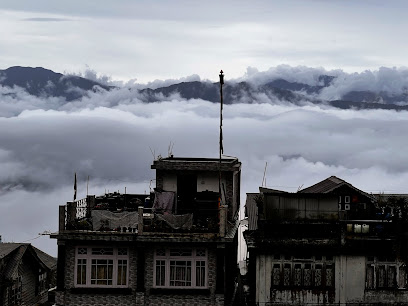
Lloyd Botanical Garden
Explore the serene Lloyd Botanical Garden in Darjeeling, a stunning retreat featuring diverse flora and breathtaking Himalayan views.

Unmissable attractions to see
Siddheshwar Dham (Char Dham)
Explore the serene Siddheshwar Dham in Namchi, Sikkim, a sacred pilgrimage site surrounded by stunning landscapes and a rich spiritual heritage.

Tea Garden View
Experience the captivating beauty and tranquility of Tea Garden View in Darjeeling, a natural paradise surrounded by lush tea plantations and stunning mountain scenery.

Batasia Eco Garden
Explore Batasia Eco Garden in Darjeeling: A serene escape with stunning views, vibrant blooms, and a tribute to Gorkha soldiers amidst nature's beauty.

Padmaja Naidu Himalayan Zoological Park
Experience the extraordinary wildlife of the Himalayas at Padmaja Naidu Himalayan Zoological Park in Darjeeling, a haven for endangered species and nature lovers.

Simana View Point
Experience the breathtaking beauty of Simana View Point in West Bengal, where the majestic Himalayas meet serene landscapes, perfect for every traveler.

Do Drul Chorten
Explore the serene Do Drul Chorten in Gangtok, Sikkim, a stunning Buddhist stupa offering breathtaking views and spiritual immersion.

Darjeeling Clock Tower
Explore the historical charm of Darjeeling Clock Tower, a landmark steeped in culture and surrounded by vibrant local life.

Dali Monastery
Experience tranquility and spirituality at Dali Monastery in Darjeeling, a stunning Buddhist temple nestled in the Himalayas.

Shri Mahakal Temple, Darjeeling
Discover the spiritual essence at Shri Mahakal Temple, a serene Hindu temple in Darjeeling offering breathtaking views and rich cultural experiences.

Singalila National Park
Discover the breathtaking beauty of Singalila National Park in West Bengal, home to diverse wildlife, stunning landscapes, and panoramic Himalayan views.

Himalayan Mountaineering Institute
Explore the Himalayan Mountaineering Institute in Darjeeling for an unforgettable adventure and breathtaking views of the majestic mountains.

Enchey Monastery
Experience the tranquility and cultural richness of Enchey Monastery in Gangtok, a serene Buddhist temple amidst breathtaking Himalayan scenery.

Tiger Hill, Darjeeling
Experience the breathtaking sunrise over the Himalayas at Tiger Hill, Darjeeling, a must-see destination for every traveler seeking natural beauty.

Lloyd Botanical Garden
Experience the tranquil beauty of Lloyd Botanical Garden, a botanical gem in Darjeeling, showcasing diverse flora against a stunning Himalayan backdrop.

Namgyal Institute of Tibetology
Explore Tibetan culture and history at Namgyal Institute of Tibetology, a serene museum in Gangtok, Sikkim showcasing rich artifacts and manuscripts.

Essential places to dine
Glenary's— Bakery, Resturant & Pub
Discover Glenary's in Darjeeling: A charming bakery and restaurant offering delicious cuisine and stunning views in a heritage setting.

Keventer's
Experience the delightful flavors and nostalgic charm at Keventer's in Darjeeling - your go-to breakfast destination amidst breathtaking mountain views.

SANTA BANTA DHABA
Experience authentic Indian flavors at Santa Banta Dhaba in Darjeeling - where culinary tradition meets warm hospitality.

Kunga Restaurant
Discover authentic Tibetan and Chinese cuisine at Kunga Restaurant in Darjeeling, where every meal is a taste of tradition amidst stunning Himalayan views.

Hotel MAHAKAL and Restaurant
Discover authentic Indian and Chinese flavors at Hotel MAHAKAL in Darjeeling's vibrant Chauk Bazaar - a culinary gem for every traveler.

Hasty Tasty Pure Veg Restaurant
Experience the flavors of India and China at Hasty Tasty Pure Veg Restaurant in Darjeeling—where vegetarian delights await you.

Dekevas Restaurant
Discover authentic Tibetan, Chinese, and Korean cuisine at Dekevas Restaurant in Darjeeling's vibrant Chauk Bazaar.

Hotel Lunnar (Pure Veg.)
Discover pure vegetarian bliss at Hotel Lunnar in Darjeeling - where every meal is a delightful experience amidst stunning Himalayan views.

Sonam's Kitchen
Experience the unique flavors of Darjeeling at Sonam's Kitchen – where local charm meets culinary excellence.

Lazeez Affaire
Discover the best vegetarian dining experience in Darjeeling at Lazeez Affaire – where South Indian meets Chinese cuisine.
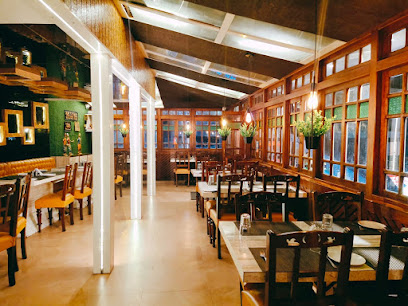
Penang Restaurant
Discover authentic Nepalese cuisine at Penang Restaurant in Darjeeling - where flavor meets breathtaking views.

Kathmandu Kitchen
Experience authentic Nepalese cuisine at Kathmandu Kitchen in Darjeeling - where every dish tells a story.

Granola
Discover Granola in Darjeeling: Your destination for healthy dining amidst breathtaking views.

Boneys
Experience delightful sandwiches and fast food at Boneys in Chauk Bazaar, Darjeeling - the perfect pitstop during your travels.

Biryani Baar Family Restaurant
Experience authentic Indian and Chinese cuisine at Biryani Baar Family Restaurant in Darjeeling - perfect for families and food lovers alike.

Markets, malls and hidden boutiques
Darjeeling Mall
Experience the vibrant shopping culture and stunning views at Darjeeling Mall, a must-visit destination for every tourist in Darjeeling.

The Yellow Box
Explore The Yellow Box in Darjeeling for exquisite local crafts and souvenirs, capturing the essence of this enchanting hill station.
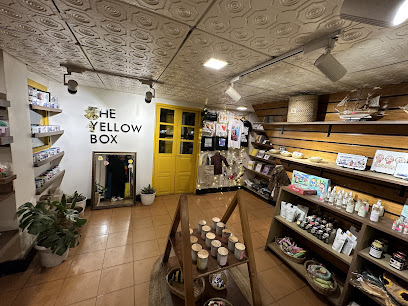
Dragon Market
Explore the colorful Dragon Market in Darjeeling, where local crafts, delicious food, and vibrant culture come together for an unforgettable shopping experience.

Unique Sweets
Immerse yourself in the sweet flavors of Darjeeling at Unique Sweets, where traditional Indian confections await your taste buds.

KANCHANJUNGA
Explore unique clothing options at Kanchanjunga, where tradition meets modern fashion in the heart of Darjeeling.

Style Savvy
Discover unique and stylish apparel at Style Savvy, Darjeeling's premier clothing store, blending modern trends with traditional influences.

Biswa Bangla Store
Explore the vibrant crafts of West Bengal at Biswa Bangla Store in Darjeeling, where artistry meets tradition in every handmade piece.

Himalaya Gears, Darjeeling
Discover adventure at Himalaya Gears, Darjeeling - your ultimate destination for outdoor clothing and equipment.

Habeeb Mullick & Sons
Explore the rich heritage of Darjeeling at Habeeb Mullick & Sons, your destination for unique antiques and collectibles that tell a story.

Reliance SMART Bazaar
Explore Reliance SMART Bazaar in Darjeeling, your ultimate shopping destination for local goods, fresh produce, and unique souvenirs amidst stunning Himalayan views.

TRENDS
Discover stylish casual wear and unique finds at Trends in Rink Mall, Darjeeling – where shopping meets scenic beauty.

Nepal Variety Stores
Discover the vibrant Nepal Variety Stores in Darjeeling, where shopping meets local culture and unique finds await every traveler.
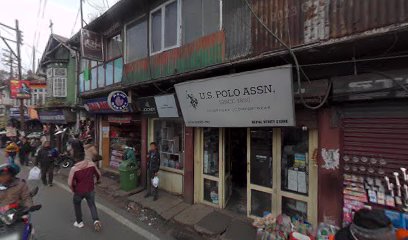
Tibet Arts
Explore Tibet Arts in Darjeeling for unique antiques and cultural treasures that capture the essence of Tibetan heritage.

Euphoria
Discover Euphoria in Darjeeling – your go-to shop for stylish shoes, trendy clothing, and local fashion inspiration in the heart of Chauk Bazaar.

Chandulal's
Discover unique clothing and captivating antiques at Chandulal's, the heart of Darjeeling's shopping experience.

Essential bars & hidden hideouts
Glenary's— Bakery, Resturant & Pub
Experience the delightful flavors and rich heritage of Darjeeling at Glenary's, a beloved bakery, restaurant, and pub in the heart of the hills.

Joey's Pub
Discover the charm of Joey's Pub in Darjeeling - a cozy spot for delicious food, refreshing drinks, and vibrant atmosphere.
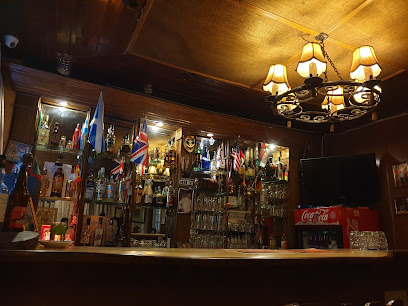
Ara restaurant cum bar
Experience the flavors of Darjeeling at Ara Restaurant cum Bar, where delightful dishes meet stunning mountain views.

Simla Bar & Restaurant | Best Party Place
Discover the vibrant flavors of Punjab at Simla Bar & Restaurant, Darjeeling's premier destination for families and party enthusiasts, boasting an inviting atmosphere and stunning views.

New Lion Gate Hotel, Restaurant & Bar
Discover the perfect blend of comfort, cuisine, and camaraderie at New Lion Gate Hotel, Restaurant & Bar in the heart of Darjeeling.

Blue Pine Bar & Restaurant
Savor the flavors of Darjeeling at Blue Pine Bar & Restaurant, where delicious grilled dishes meet stunning mountain views.

Chopstix Restaurant & Bar, Darjeeling,India
Discover the vibrant flavors of Chopstix Restaurant & Bar in Darjeeling, a perfect blend of local and international cuisine set in scenic tea gardens.

The Chancellor Restobar
Discover the vibrant nightlife of Darjeeling at The Chancellor Restobar, where local flavors meet a cozy ambiance.

Kopila Open Bar
Discover the laid-back charm of Kopila Open Bar in Darjeeling, where refreshing drinks meet stunning views and vibrant local culture.

Simma restaurant cum bar
Discover Simma Restaurant cum Bar in Darjeeling: A delightful mix of local flavors and stunning views in a cozy atmosphere.

Rumza bar
Discover Rumza Bar in Darjeeling, where local charm meets cozy relaxation, perfect for unwinding with friends amid stunning hill views.

Wine Company - The Bar
Discover the charm of Wine Company - The Bar in Darjeeling, where fine wines meet stunning Himalayan views for a memorable experience.

Druk Bar And Restaurant
Experience the vibrant charm of Druk Bar And Restaurant in Darjeeling, where delightful drinks and local cuisine meet stunning Himalayan views.

Douglas Bar
Discover the cozy charm of Douglas Bar in Darjeeling, where local brews meet stunning mountain views for an unforgettable experience.

Local Bar, Ghoom
Experience the lively atmosphere of the Local Bar in Ghoom, where exquisite drinks and delicious bites await in Darjeeling's vibrant nightlife.

Travel experiences inspired by this city
Explore more travel diariesLocal Phrases
-
- Helloनमस्ते
[Namaste] - Goodbyeअलविदा
[Alvida] - Yesहाँ
[Haan] - Noनहीं
[Nahi] - Please/You're welcomeकृपया
[Kripaya] - Thank youधन्यवाद
[Dhanyavad] - Excuse me/Sorryमाफ़ कीजिए
[Maaf kijiye] - How are you?आप कैसे हैं?
[Aap kaise hain?] - Fine. And you?ठीक हूँ। आप सुन्दर हैं?
[Theek hoon. Aap kaise hain?] - Do you speak English?क्या आप अंग्रेजी बोल सकते हैं?
[Kya aap angreji bol sakte hain?] - I don't understandमैं समझ नहीं पाया
[Main samajh nahi paya]
- Helloनमस्ते
-
- I'd like to see the menu, pleaseकृपया मेनू दिखाएं
[Kripaya menu dikhaayein] - I don't eat meatमैं मांस नहीं खाता/खाती
[Main maans nahi khaata/khaati] - Cheers!चियर्स!
[Cheers!] - I would like to pay, pleaseकृपया मैं भुगतान करना चाहूँ
[Kripaya main bhugtan karna chaahoon]
- I'd like to see the menu, pleaseकृपया मेनू दिखाएं
-
- Help!मदद!
[Madad!] - Go away!चले जाओ!
[Chale jao!] - Call the Police!पुलिस को बुलाओ!
[Police ko bulaao!] - Call a doctor!डॉक्टर को बुलाओ!
[Doctor ko bulaao!] - I'm lostमैं खो गया/गई हूँ
[Main kho gaya/gayi hoon] - I'm illमुझे बीमारी है
[Mujhe bimari hai]
- Help!मदद!
-
- I'd like to buy...मैं खरीदना चाहूँगा/चाहूँगी...
[Main khareedna chaahoonga/chaahoongi...] - I'm just lookingमैं बस देख रहा/रही हूँ
[Main bas dekh raha/rahi hoon] - How much is it?यह कितने का है?
[Yeh kitne ka hai?] - That's too expensiveयह बहुत महंगा है
[Yeh bahut mehnga hai] - Can you lower the price?क्या आप मूल्य कम कर सकते हैं?
[Kya aap mulya kam kar sakte hain?]
- I'd like to buy...मैं खरीदना चाहूँगा/चाहूँगी...
-
- What time is it?समय क्या है?
[Samay kya hai?] - It's one o'clockएक बजे हैं
[Ek baje hain] - Half past (10)दस बजे तक
[Das baje tak] - Morningसुबह
[Subah] - Afternoonदोपहर
[Dopahar] - Eveningशाम
[Shaam] - Yesterdayकल
[Kal] - Todayआज
[Aaj] - Tomorrowकल
[Kal] - 1एक
[Ek] - 2दो
[Do] - 3तीन
[Teen] - 4चार
[Char] - 5पाँच
[Paanch] - 6छह
[Chhah] - 7सात
[Saath] - 8आठ
[Aath] - 9नौ
[Nau] - 10दस
[Das]
- What time is it?समय क्या है?
-
- Where's a/the...?...कहाँ है?
[...Kahan hai?] - What's the address?पता क्या है?
[Pata kya hai?] - Can you show me (on the map)?क्या आप मुझे दिखा सकते हैं (नक्शे पर)?
[Kya aap mujhe dikhha sakte hain (naksha par)?] - When's the next (bus)?अगली (बस) कब है?
[Agli (bus) kab hai?] - A ticket (to ....)एक टिकट (किसके लिए....)
[Ek ticket (kiske liye....)]
- Where's a/the...?...कहाँ है?
History of Darjeeling
-
Before British colonization, the region of Darjeeling was predominantly inhabited by the Lepcha tribe. The area was part of the Kingdom of Sikkim and later came under the control of the Gorkhas of Nepal. The region's early history is steeped in the traditions and cultures of these indigenous communities.
-
In the early 19th century, the British East India Company acquired Darjeeling from the Kingdom of Sikkim through a deed of grant in 1835. The British were attracted to Darjeeling’s cool climate and scenic beauty, which reminded them of their homeland. They established it as a hill station and a sanatorium for British troops.
-
One of the most significant developments during the British era was the establishment of tea plantations. The first experimental tea gardens were established in the 1840s, and by the mid-19th century, Darjeeling tea had gained international fame for its unique flavor and quality. This industry transformed the region’s economy and landscape.
-
The Darjeeling Himalayan Railway, often called the 'Toy Train,' was opened in 1881. This narrow-gauge railway is a marvel of engineering, traversing steep gradients and tight curves. It played a crucial role in the development of Darjeeling, making it more accessible and facilitating the transport of tea and other goods. The railway was designated a UNESCO World Heritage Site in 1999.
-
Darjeeling was not immune to the waves of India’s struggle for independence. The region saw various movements and protests led by local leaders who sought to align the hill station with the larger nationalist cause. Post-independence, Darjeeling became part of the Indian state of West Bengal.
-
Since the 1980s, there has been a significant socio-political movement in Darjeeling advocating for the creation of a separate state called Gorkhaland, primarily to address the distinct cultural and linguistic identity of the Gorkha community. This movement has seen various phases of activism, negotiations, and sometimes unrest, significantly impacting the region's socio-political landscape.
-
Darjeeling is a cultural mosaic, home to a diverse population comprising Lepchas, Bhutias, Nepalis, and more. This diversity is reflected in the region’s festivals, cuisine, and daily life. The blend of different cultures has created a unique and harmonious community spirit that is palpable in every corner of the town.
-
Today, Darjeeling is a popular tourist destination, known for its panoramic views of the Himalayas, colonial architecture, and famous tea. It continues to be a cultural and educational hub, with several prestigious schools and institutions. The town’s rich history and vibrant culture make it a fascinating place to explore.
Darjeeling Essentials
-
Darjeeling is located in the Indian state of West Bengal. The nearest airport is Bagdogra Airport, which is approximately 70 kilometers away. From Bagdogra, you can hire a taxi or take a shared jeep to Darjeeling. The nearest major railway station is New Jalpaiguri (NJP), which is well-connected to major cities across India. From NJP, you can take a taxi, shared jeep, or the famous Darjeeling Himalayan Railway (Toy Train) to reach Darjeeling.
-
Once in Darjeeling, local taxis and shared jeeps are the most common modes of transportation. The town is hilly and walking can be challenging, but it's a great way to explore the local attractions. For longer journeys, you can rent a car or take a bus to nearby destinations like Kalimpong and Gangtok. The Toy Train also offers a scenic way to travel short distances within the region.
-
The official currency in India is the Indian Rupee (INR). Credit and debit cards are widely accepted in hotels, restaurants, and larger shops in Darjeeling. However, it is advisable to carry cash for smaller establishments and markets. ATMs are available in the town, but they can sometimes run out of cash during peak tourist seasons.
-
Darjeeling is generally a safe destination for tourists. However, it is advisable to take standard precautions. Avoid walking alone at night in secluded areas and keep an eye on your belongings in crowded places like markets. While there are no specific high-crime areas targeting tourists, staying vigilant and aware of your surroundings is always a good idea.
-
In case of emergency, dial 100 for police assistance and 102 for medical emergencies. There are several hospitals and medical facilities in Darjeeling, including the Darjeeling District Hospital. It is recommended to have travel insurance that covers medical emergencies. Pharmacies are also available where you can purchase over-the-counter medications.
-
Fashion: Do dress modestly, especially when visiting religious sites. Avoid wearing revealing clothing. Religion: Do respect local customs and traditions. Always remove your shoes before entering temples and monasteries. Public Transport: Do be respectful and give up your seat to elderly passengers. Don't eat or drink on public transport. Greetings: Do greet people with a 'Namaste' (palms pressed together) or a simple 'Hello.' Shaking hands is also acceptable. Eating & Drinking: Do try local delicacies like momos and thukpa. Don't refuse food offerings, as it is considered impolite.
-
To experience Darjeeling like a local, visit the local markets such as Chowk Bazaar for fresh produce and traditional goods. Engage with locals, who are often friendly and willing to share stories about the town's history and culture. Don't miss visiting the tea estates and sampling Darjeeling tea. For a unique experience, take an early morning trip to Tiger Hill to witness the sunrise over the Kanchenjunga range.
Trending Landmark in Darjeeling
-
Darjeeling Mall
-
MAYFAIR Hill Resort Darjeeling
-
Glenary's— Bakery, Resturant & Pub
-
Darjeeling Rangeet Valley Passenger Ropeway
-
Peace Pagoda, Darjeeling
-
Batasia Eco Garden
-
Tea Garden View
-
Observatory Hill View Point
-
Darjeeling Clock Tower
-
Padmaja Naidu Himalayan Zoological Park
-
Kunga Restaurant
-
Dali Monastery
-
Mahakal Temple
-
Chowrasta Darjeeling
-
Lloyd Botanical Garden
Nearby Cities to Darjeeling
-
Things To Do in Siliguri
-
Things To Do in Gangtok
-
Things To Do in Phuentsholing
-
Things To Do in Paro
-
Things To Do in Thimphu
-
Things To Do in Wangdue Phodrang
-
Things To Do in Punakha
-
Things To Do in Rangpur
-
Things To Do in Namche Bazaar
-
Things To Do in Trongsa
-
Things To Do in Bumthang
-
Things To Do in Jakar
-
Things To Do in Nagarkot
-
Things To Do in Bhaktapur
-
Things To Do in Mongar




















